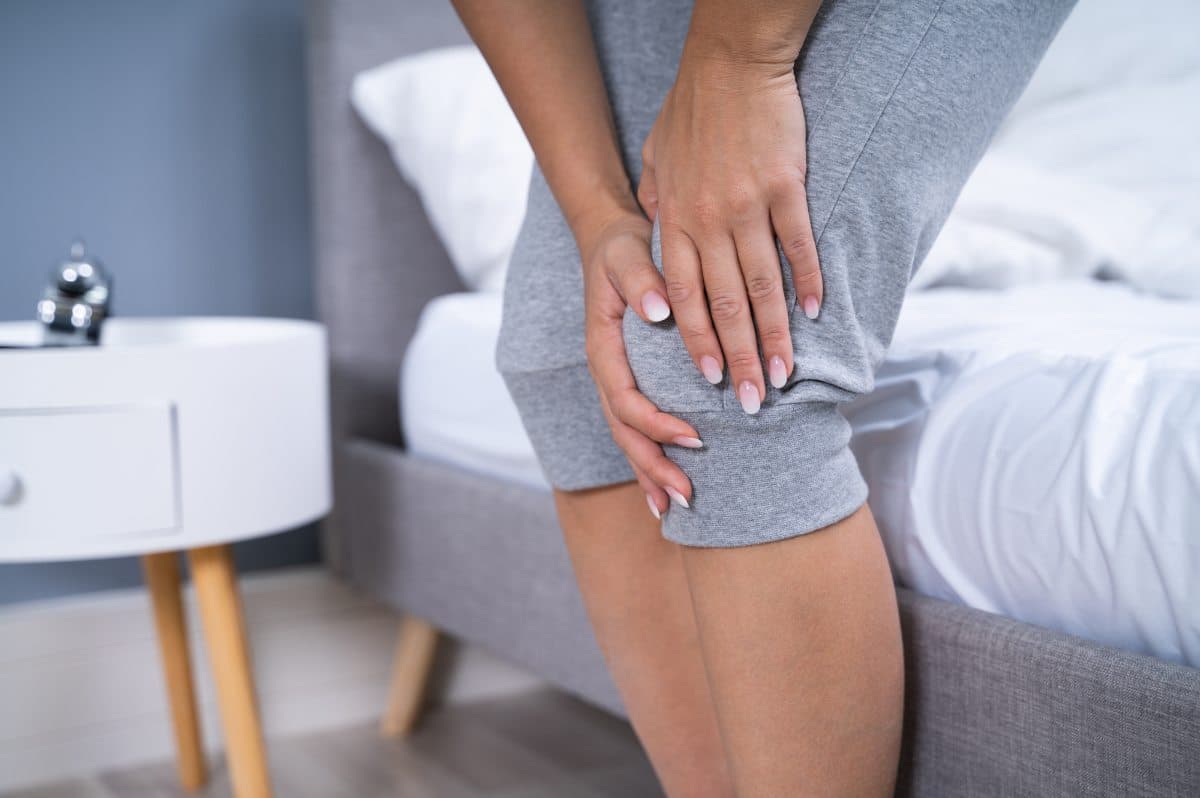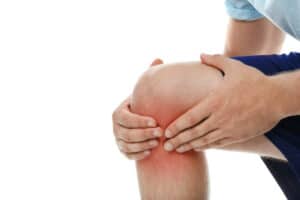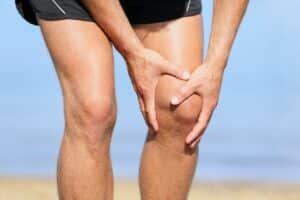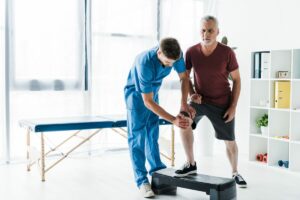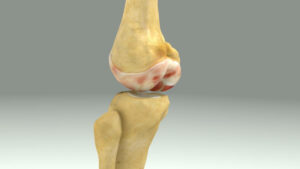Free download: Top 10 Natural & Easy Remedies for Joint Pain from Home. Learn these helpful remedies.
Estimated Reading Time: 12 minutes read
The ligaments in our knees are meant to provide support and stability to the joint. When one or more of those ligaments is injured, it’s amazing how much our mobility is affected! A common knee ligament injury involves the medial collateral ligament, or MCL.
While the knee pain and restrictions that follow an MCL injury aren’t the most pleasant, it’s very much possible to treat these knee injuries and get back to our normal lives.
Exercise is one of the best ways to conservatively manage an MCL injury, but it’s important to know which exercises are best for your knee pain.
We’ll take a closer look at the medial collateral ligament and all the details surrounding an MCL injury related to a tear in the ligament.
Table of Contents
Anatomy of the Knee
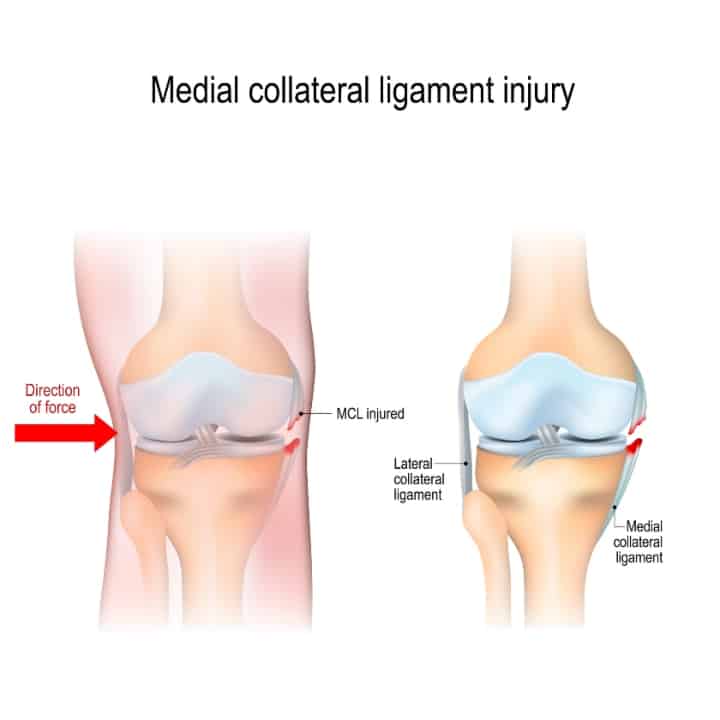
A ligament is a thick band of connective tissue that holds two bones together. The knee ligaments help to keep the knee stable.
The knee joint is supported and stabilized by four key ligaments:
- Medial collateral ligament (MCL)
- Lateral collateral ligament (LCL)
- Anterior cruciate ligament (ACL)
- Posterior cruciate ligament (PCL)
These structures help to connect the femur, or thigh bone, to the tibia, or shin bone.
Location and Role of the Ligaments
The medial collateral ligament is located on and stabilizes the medial, or inner knee.
The lateral collateral ligament is located on and stabilizes the lateral, or outside of the knee.
The anterior cruciate ligament is located in the middle of the knee and helps to keep the shin bone from moving too far forward.
The posterior cruciate ligament is also located in the middle of the knee, but helps to keep the shin bone from moving too far backward.
MCL Tears
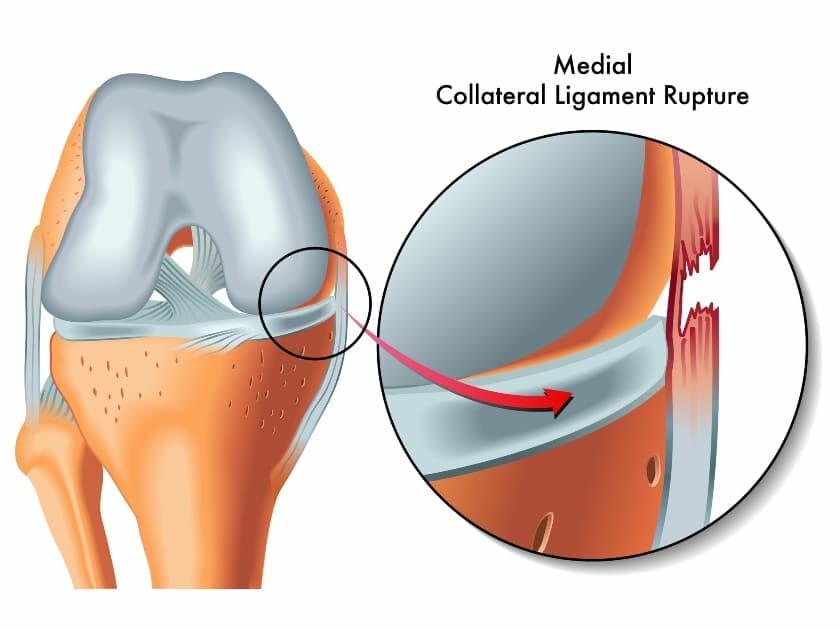
The MCL, just like any other ligament, is prone to tearing under certain conditions and circumstances. An MCL ligament tear occurs when the medial collateral ligament is placed under more stress than normal, which can cause tearing of the ligament.
An MCL tear can be graded based on severity of the tear and associated symptoms:
- Grade I tear: This is considered a partial MCL tear. This is considered more of a mild knee injury and can typically be treated without surgery.
- Grade II tear: This is considered a full MCL tear that spans across the whole ligament versus a partial tear, however, the ligament has not completely torn. This grade can also usually be treated without surgery, depending on the stability of the knee.
- Grade III tear: This is a full MCL tear where the ligament is completely torn or ruptured, and is no longer intact. This type of tear more often than not will require surgery.
Causes of an MCL Tear
While MCL tears are a common injury for athletes and those who play sports recreationally, non-athletes can also be subject to them.
Sports or movements that involve jumping, sudden turns, or twisting can lead to increased susceptibility of an MCL tear. A direct blow to the outside of the knee, which pushes the knee to the inside, is a common cause of an MCL tear, like during a football tackle.
Other potential causes of a medical collateral ligament tear, according to the Centeno-Schultz Clinic, will include repetitive stress on the ligament or the inside of the knee joint, sudden changes in speed while turning or twisting, or a rapid change in the way you are contracting a muscle group near this area.
Symptoms of an MCL Tear
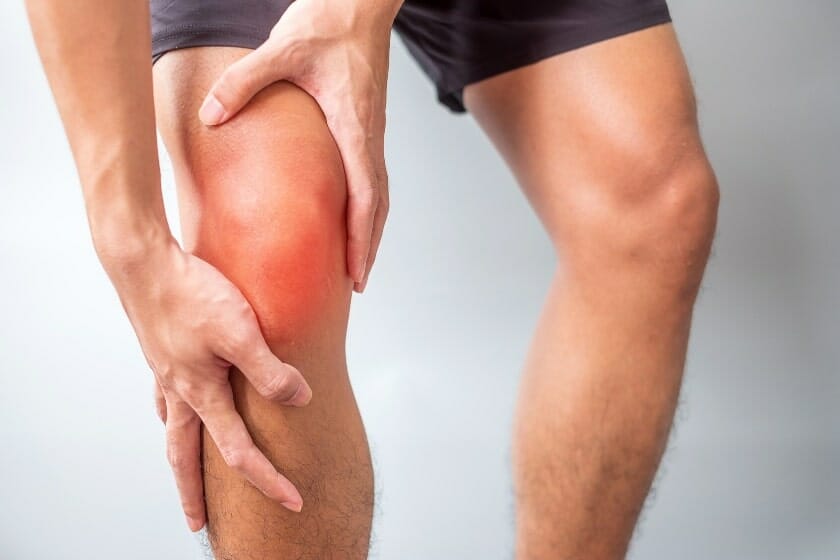
If you’re concerned that you may have an MCL tear, here are some of the most common symptoms that you’ll notice:
- Knee pain, especially on the inside of the knee, immediately after the injury
- Swelling or edema
- Reduced knee range of motion when bending and straightening the knee
- Tenderness on the inside of the knee
- Unsteadiness in the knee or buckling
Making the Official Diagnosis
Okay, so you suspect that you might have an MCL tear…
In order to be sure, it’s best to visit your healthcare provider. This may include your primary care physician, an orthopedist, or a sports medicine specialist.
Physical Examination
Your healthcare provider will perform a physical exam after taking a thorough medical history. They will assess flexibility and strength around the injured knee, areas of tenderness, perform special tests to confirm or rule out a diagnosis, and examine how you are walking.
One of the most common special tests performed to determine if there is an MCL injury is a valgus stress test. During this test, the leg is positioned in such a way that places intentional stress on the medial collateral ligament.
A positive test is present if there is excessive laxity or medial joint gapping with or without pain.
Imaging Tests
Your doctor may also recommend additional imaging tests to get a better look at the soft tissues surrounding the knee joint. This will help to confirm an MCL tear and rule out other nearby soft tissue damage, such as in the medial meniscus or any other injured ligament.
An initial X-ray may be performed to ensure there is no injury to the bone, such as a fracture.
A CT scan will provide a more in-depth view of the injured area, however, an MRI (a.k.a. Magnetic Resonance Imaging) is really the best to show a soft tissue injury to the medial collateral ligament.
How to Treat an MCL Tear
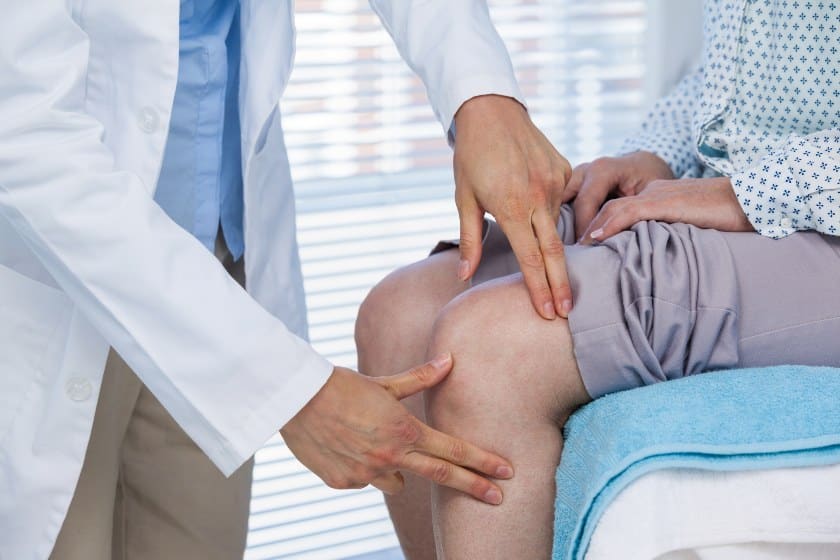
How you treat the knee after a medial collateral ligament injury depends on the phase of healing you’re in.
Pain Management
Your healthcare provider may prescribe nonsteroidal anti-inflammatory medications to assist with the acute phase of healing, when pain and inflammation are likely at its highest.
R.I.C.E.
Initial treatment immediately after the MCL tear will focus on reducing pain and swelling. This typically will involve the R.I.C.E. method.
Make sure to rest the injured leg. Trying to return to your sport or too much of any activity too soon can further injure the knee and prolong your recovery time.
Ice is very helpful for pain and edema management. Make sure to ice no longer than 20 minutes at a time. Take at least a 30 minute break between icing sessions.
Compression comes in many forms and will help with swelling reduction. As swelling reduces, this can also help to reduce pain as well. You may consider an elastic bandage, such as an ACE wrap, or a knee brace for compression.
Elevation will promote circulation and a good blood supply to the injured leg.
Exercise
Once out of the initial acute phase of healing, your doctor will likely refer you to physical therapy. Your physical therapist will include various treatment methods to help you recover, one of which involves exercise for the MCL tear.
Which exercises are recommended and prescribed will vary depending on your physical therapy evaluation, your specific pain limitations, and what the injured knee can tolerate at that time.
We’ll take a look at 5 highly recommended exercises for you to practice if you have an MCL tear.
1. Heel Slides
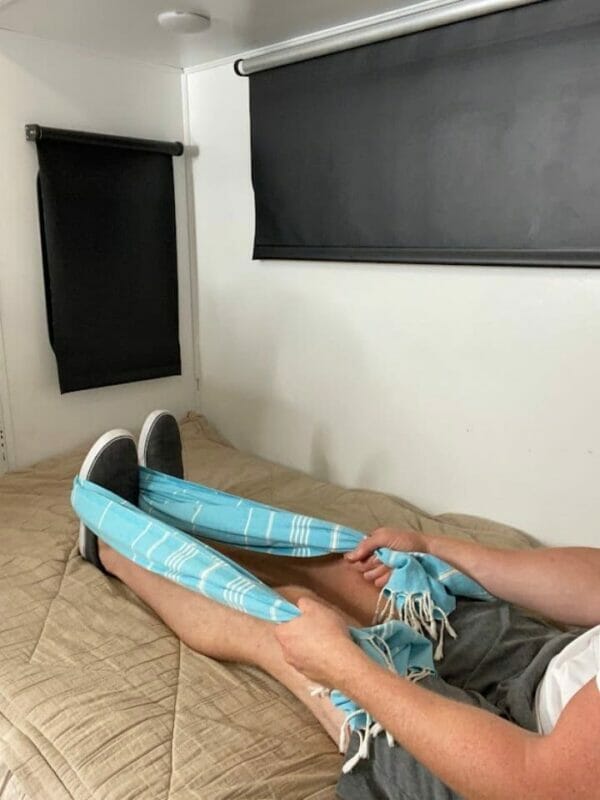
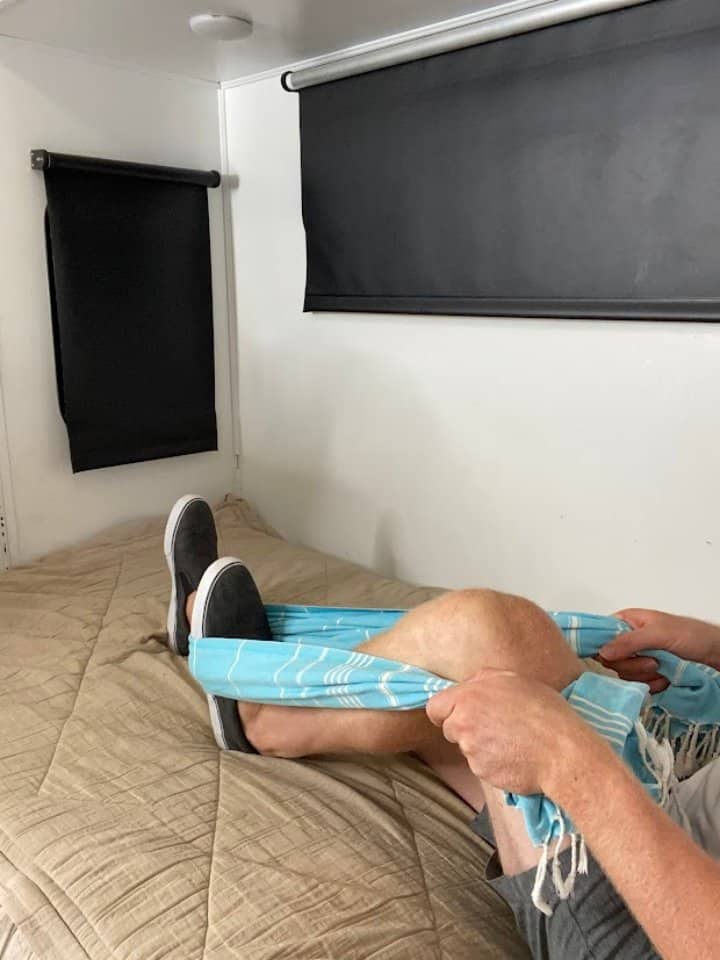
- Heel slides are meant to help improve knee flexion, or bending of the knee, if this is a restricted motion for you.
- You can perform a heel slide sitting with your legs in front of you or laying on your back.
- Using a non-elastic strap, wrap the strap around the foot on the injured leg.
- While holding the ends of the strap, use the arms to slide the heel towards you, as you bend the knee.
- Stretch as far as you can tolerate without making pain worse, hold for 5 seconds, then return to your starting position.
- Repeat 10 repetitions for 2-3 sets.
2. Terminal Knee Extension
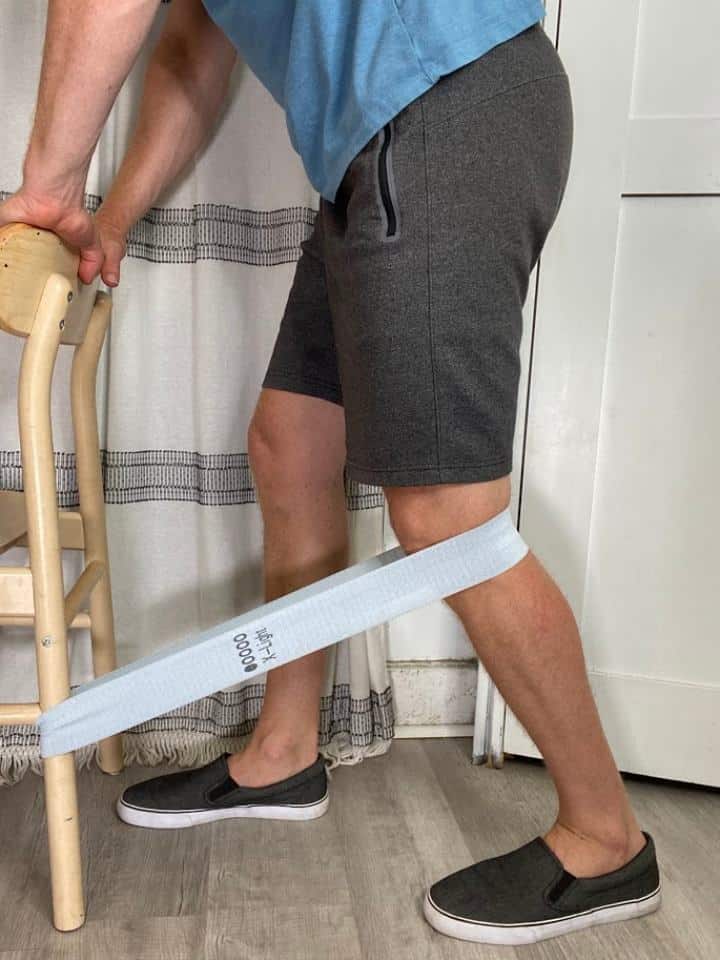
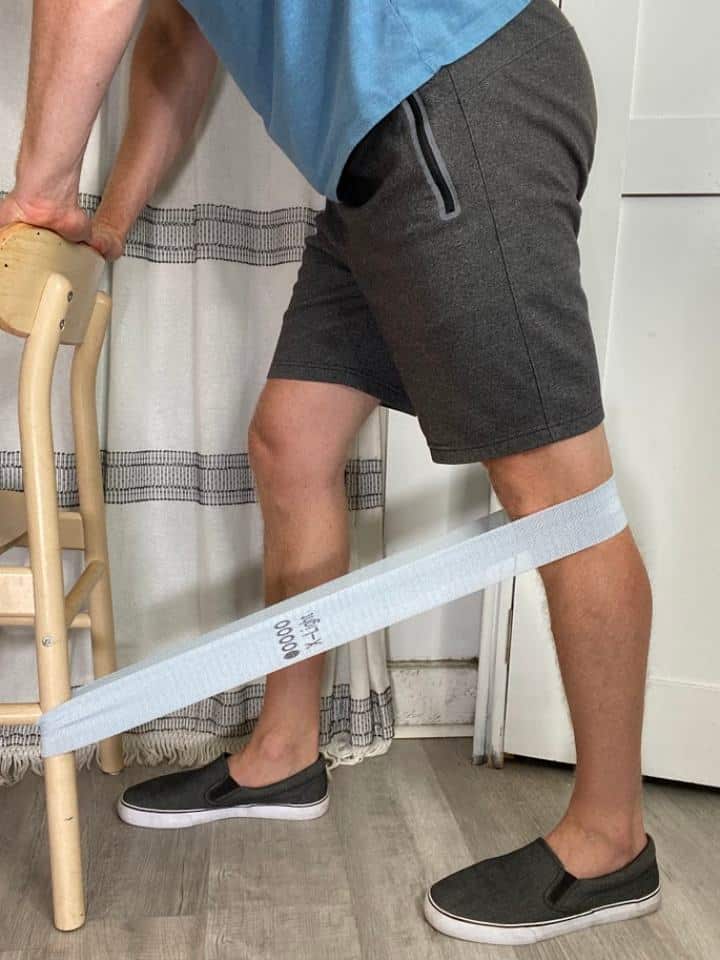
- This exercise will help to initiate activation of your quadriceps, or the muscles in the front of the thigh. The purpose of this is to improve knee extension, or straightening of the knee.
- Attach a resistance band (light, medium, or heavy) to something sturdy, such as a chair leg. The band should be tied so that you create a loop to step into.
- Step into the loop with the injured leg, and position the band so that it’s resting against the back of the knee.
- Stand with the feet side by side, but the knee with the injury will be slightly bent.
- Slowly extend, or straighten, the knee with the MCL tear. Hold for 5 seconds, then return to your starting position.
- Repeat 10-15 repetitions for 2-3 sets.
3. Sidelying Hip Abduction
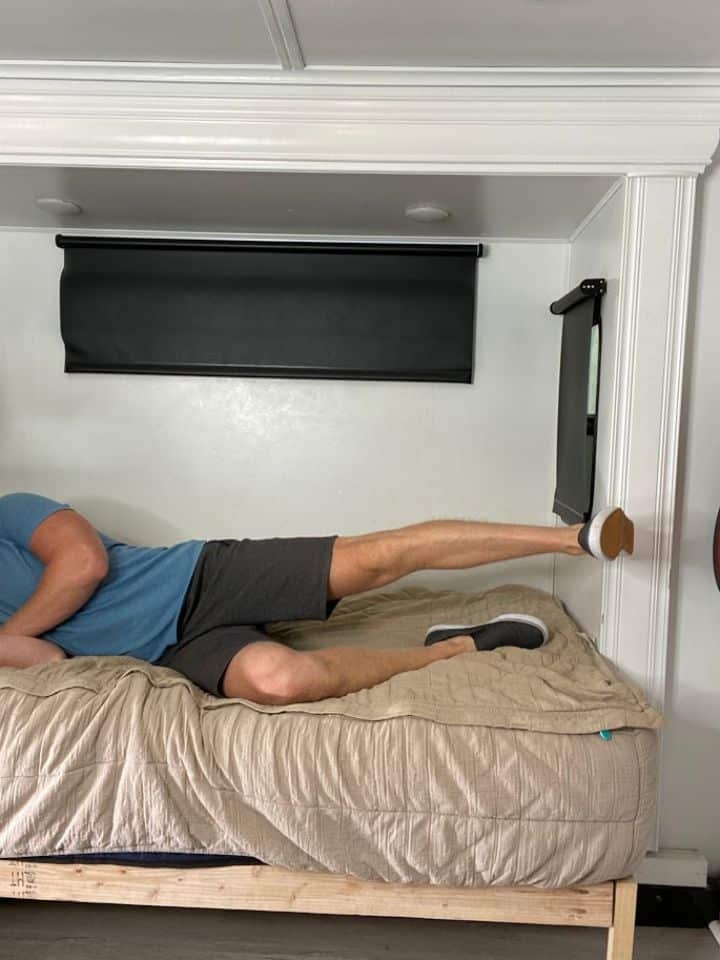
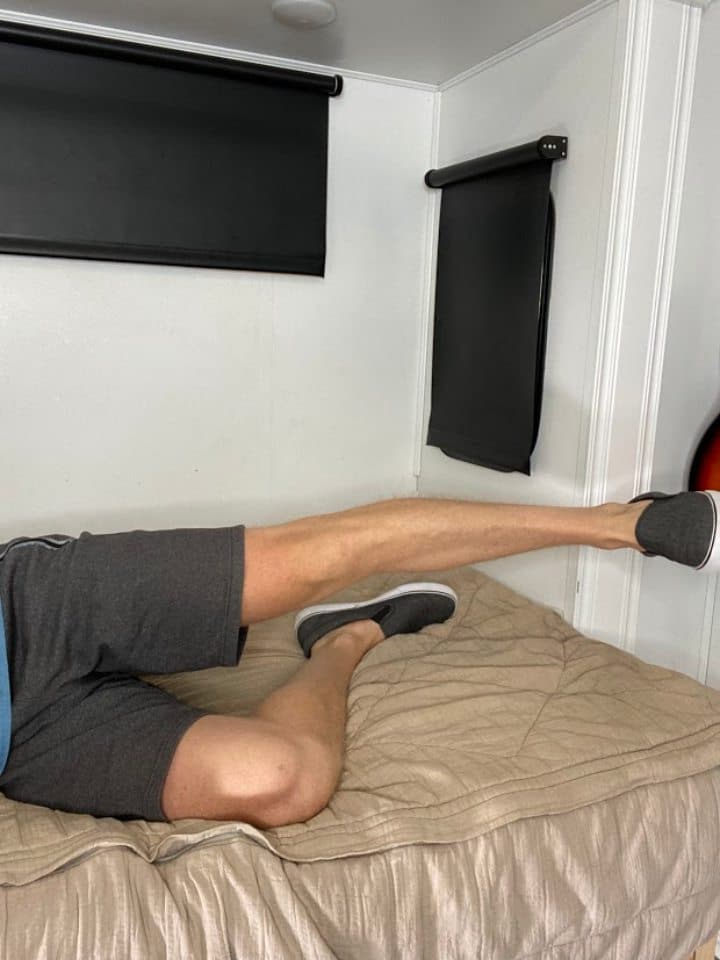
- This exercise will target strengthening the outer hip abductor muscles, which will help in providing additional support and stability to the knee with the MCL tear.
- Lay on your side (floor, couch, or bed is fine). The bottom leg should be bent and relaxed, while the top leg is completely straight.
- Make sure you’re positioned in a straight line. You shouldn’t be able to see your foot on the kicking leg while in this position.
- Kick the leg slightly above hip level, then lower back down to your starting position.
- Repeat 10-15 repetitions for 2-3 sets. You can also practice on the other side to keep things symmetrical.
4. Lateral Walk
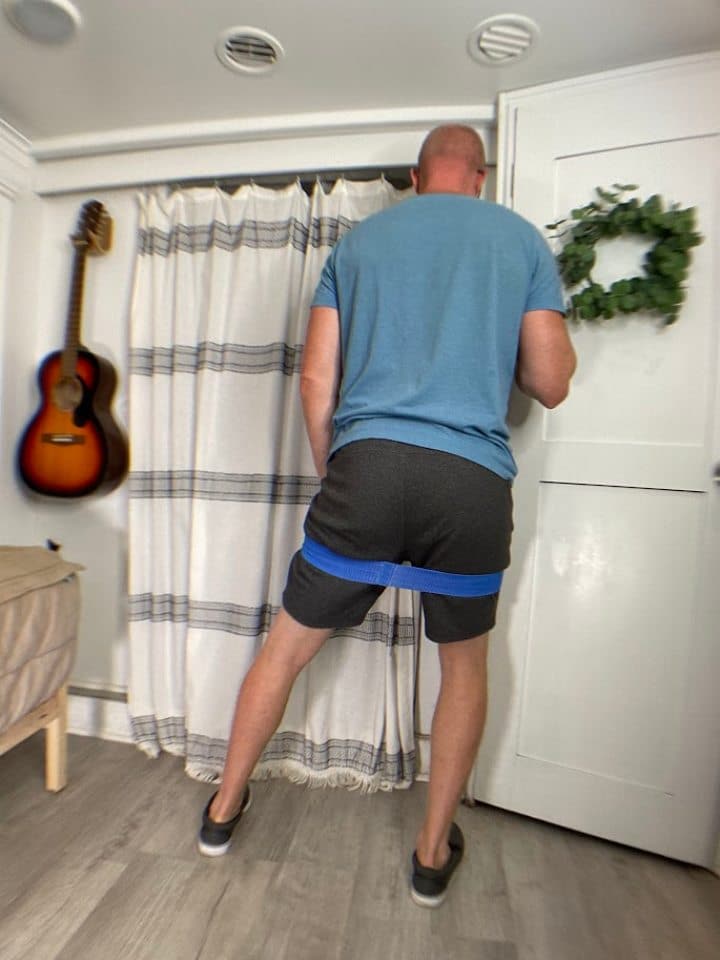
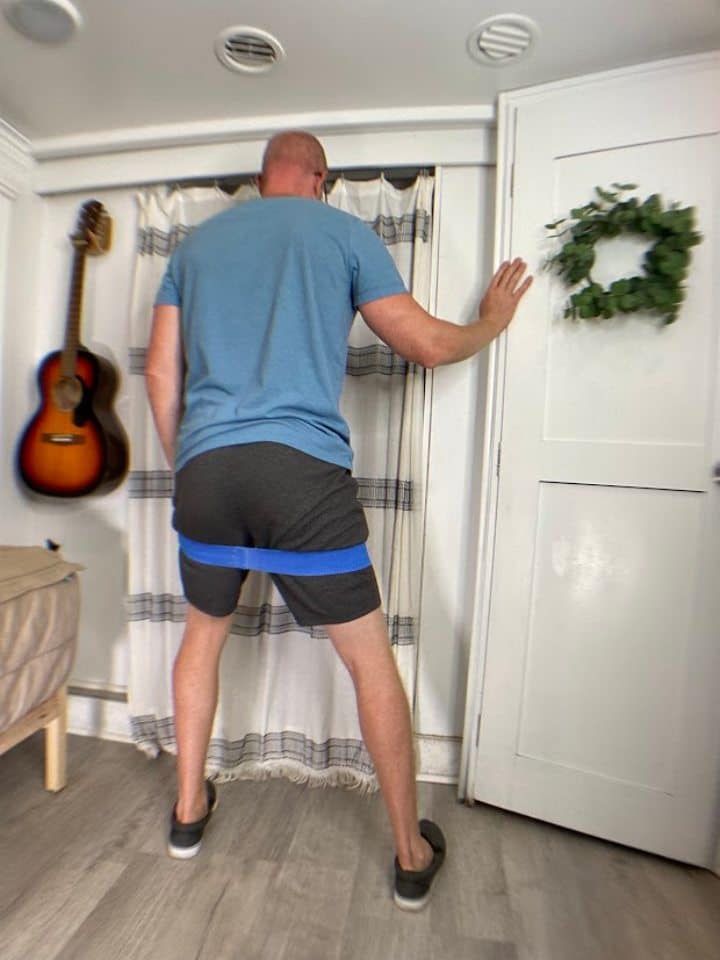
- A lateral walk is another exercise that targets the outer hip muscles, but in standing versus laying down, such as with the sidelying hip abduction exercise.
- Standing with the feet together, tie a resistance band (light, medium, or heavy) around the thighs.
- Stand in front of your countertop in case you need to use it for balance support.
- If you’re standing all the way to the left side of your countertop, your first step will be with your right leg and vice versa.
- Your first step should have the leading leg opening about hip width apart. The second leg follows, and you’ll end up in your starting position again.
- Continue side walking until you reach the opposite end of the countertop.
- Continue moving back and forth along your countertop for 4-5 laps.
5. Wall Squat

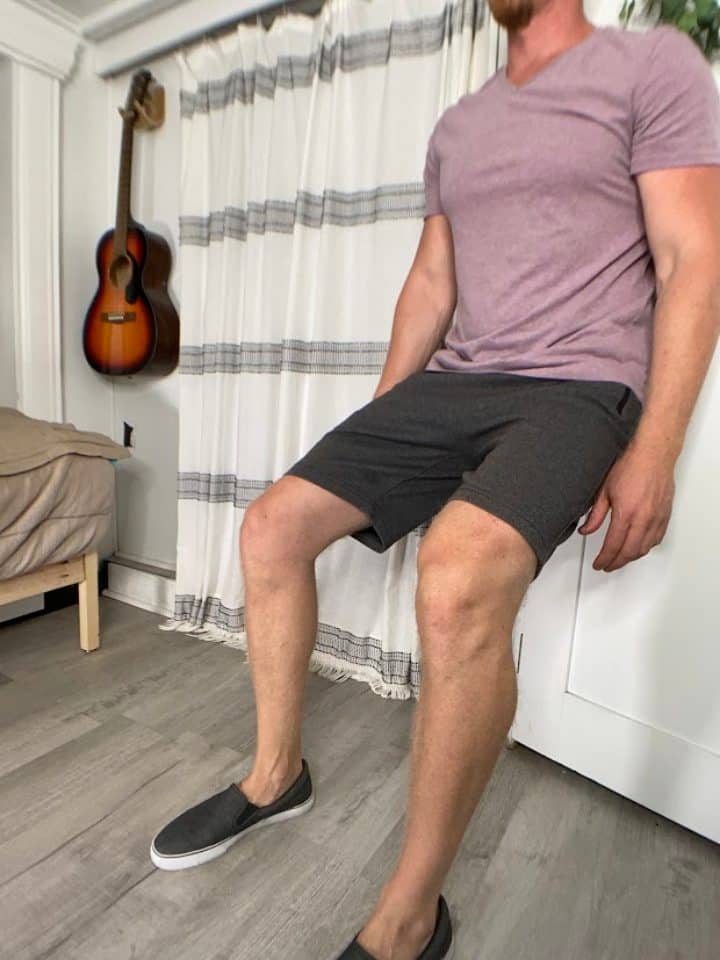
- A wall squat is an alternative squatting position that can help to reduce pressure and pain in the knee joint.
- Position your back against a wall with both feet side by side about hip width apart.
- Walk the feet away from the wall, while still leaning against it with your back, until the feet are about 3 inches away from the wall.
- Bend the knees and slide down into a squat.
- Do not allow the knees to move past the toes. Begin with a small squat and then you can gradually deepen the squat is as tolerated.
- Repeat 10-15 repetitions for 2-3 sets.
One Dynamic Exercise to Stabilize the Knee Joint
Stabilizing the knee joint is one of the most important things you can do for your knee. If you don’t stabilize your knees, it will be very difficult to move and do the activities that you love.
This video offers a dynamic exercise that forces you to use the mechanism of control for stabilizing the knee joint.
If you have ever had knee pain, or if you have ever experienced any kind of discomfort in your knee, this exercise can help to improve core stability in your leg while strengthening crucial leg and thigh muscles.
Surgery
Most MCL injuries will not require MCL surgery. The primary indications for MCL surgery depend on the grade of the medial collateral ligament tear and amount of pain and laxity in the knee joint.
Normally, partial or individual MCL tears, that do not involve other injures such as to the LCL, ACL or PCL, can heal without surgery.
A complete MCL tear or any tear with significant knee valgus instability will usually require MCL surgery.
An MCL surgery is usually an outpatient procedure that may be a direct MCL repair or MCL reconstruction.
MCL Recovery Time

Recovery time for MCL injuries will vary depending on severity of the MCL tear and if conservative treatment versus surgery is recommended.
The healing time for a torn ligament that is treated without surgery may vary, again depending on the severity of the tear. Most MCL tears that are considered mild may take up to one month to heal. A moderate medial collateral ligament tear could take up to 6 weeks to recover.
Complete MCL tears will more often than not require MCL surgery, and could take a few months to make a full recovery and return to sport.
Important Considerations
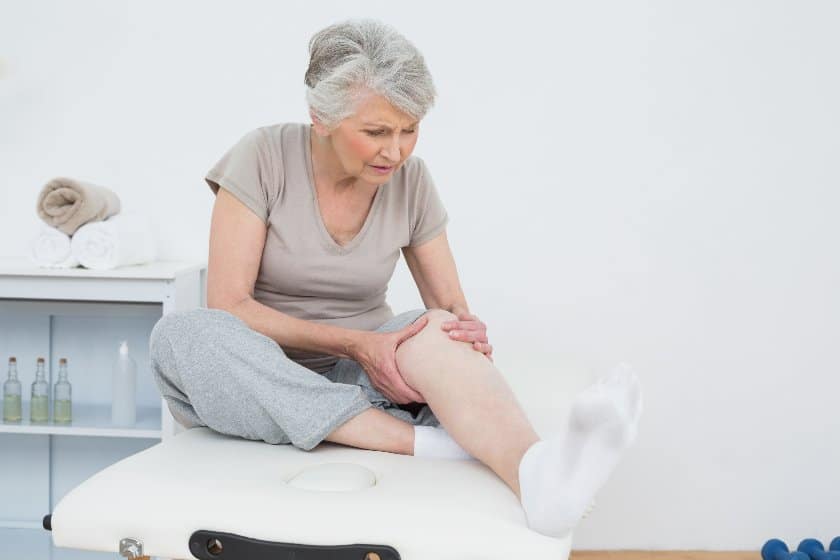
MCL injuries can definitely cause a bit of a step back in your normal routine and activity level, but as you can see are very easily treated.
The most important thing is to identify MCL tears as soon as they happen, so that you can begin receiving treatment right away.
Make sure to work closely with and listen to the advice of your healthcare provider and physical therapy team. By doing this and allowing the necessary time to heal, you’ll be out doing backflips in no time!
FAQ:
How soon can I get back to playing sports after an MCL tear?
This largely depends on the severity of your injury and if you will need surgery or not. The time frame could range from a few weeks to a few months.
It’s important to discuss with your physical therapy team your goals and skills needed to get back to your specific sport so that this can be included while in physical therapy.
Is an MCL sprain different from an MCL tear?
A ligament sprain is technically different from a tear, although with some similarities. A sprain is a more mild injury and an overstretching of the ligament, which can cause small tears. A tear is a more severe injury and occurs when there is an actual rip in the ligament.
There are different grades of sprains just like there are grades of ligament tears.
Can more than one knee ligament be injured at the same time?
Yes. Multiple ligaments in the knee can be injured at the same time.
This can, unfortunately, cause more severe symptoms and likely will lengthen your recovery time, but still is just as manageable as an isolated ligament injury.


